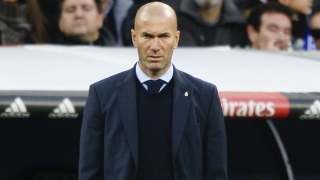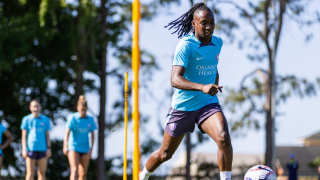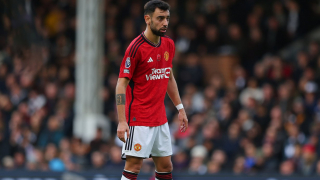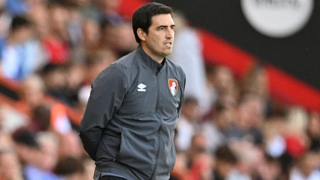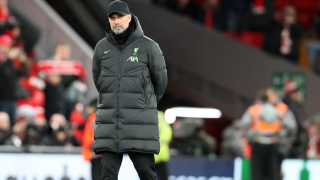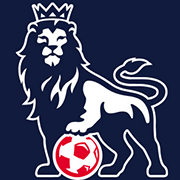Tim Grainey previews World Cup Qualifying around the world and the resurgence of Japan's Nadeshiko League.
Africa
Namibia will host the 9th TN Mobile African Women's Championship from October 11 thru 25, which doubles as the 2015 Women's World Cup qualifiers for CAF (Confederation Africane de Football). The eight teams are divided into two groups, with the top two in each group advancing to the semifinals. The top three teams go on directly to the World Cup, with no inter-confederation play-offs as between CONCACAF and CONMEBOL. The group lineups (with FIFA rankings) are:
Group A
Ivory Coast (64)
Namibia (113)
Nigeria (35)
Zambia (116)
Group B
Algeria (75)
Cameroon (51)
Ghana (50)
South Africa (56)
Nigeria, Ghana and South Africa are heavily favored to advance to Canada, especially since 2011 Women's World Cup participant Equatorial Guinea fell in the second round to the Ivory Coast in a huge upset, with Les Elephantes advancing on aggregate after a 1-1 home tie and 2-2 away tie, with the two away goals providing their ticket to Namibia.
Also in Group A, Zambia could be an outside shot to advance; having reached their first African Women's finals, the Shepoplo are trying to do the same with the Women's World Cup. They should find inspiration from their U-17 side which played in the FIFA U-17 Women's World Cup this summer in Costa Rica; the first FIFA tournament for Zambia's women's program at any level. The young Zambians finished third in their first round group, behind Italy and Venezuela but ahead of the host nation.
Nigeria has called up four home-based players from their silver medalist squad at the U-20 Women's World Cup in Canada last month for a 33 member pre-tournament camp including: defenders Ugo Njoku and Sarah Nnodim, forward Loveth Ayila and midfielder Hailmatu Ayinde. A number of foreign-based players are being called in as well, led by
Perpetua Nkwocha of Sunnana SK in Sweden. Nkwocha, 38, has participated in every African Championship except the first one in 1998, and is a four-time African Women's Footballer of the Year (2004, 2005, 2010, 2011). Other players called in from clubs abroad include:
Onome Ebi-FK Minsk of Belarus
Esther Sunday-FK Minsk of Belarus
Osinachi Ohale-Houston Dash of the U.S.'s NWSL
Desire Oparanozie-Guingamp of France
Francisca Ordega-Pitea of Sweden
The Super Falcons defeated a local male team-Yahya Umaru Boys Academy-5-1 last week. Nigeria has participated in all six previous Women's World Cups.
In friendly matches ahead of the tournament, Namibia lost to South Africa 2-0 in Johannesburg on August 10 but defeated Botswana 5-2 at home ten days later.
In Group B, Algeria looks to supplant Egypt-long the bellwether for women's soccer in North Africa-and is looking to some French-based diaspora with Division II clubs to assist: Benlazar Myriam Benlazar (F.C. Toulouse), Miraoui Lydia Mounia (Claix Football) along with Fayrouz Benyoub and Sabrina Labiod (both of Muret).
Defender Nadia Benmokhtar and forward Lilas Traikia-both of Juvisy in Division 1--could also be brought in as well for the tournament.
For South Africa, forward Portia Modise, who has over 100 caps for her country, scored three goals in their 4-0 friendly win over Zambia and is key to her team's hopes in neighboring Namibia.
Ghana's Black Queens had a two-match training tour of Japan earlier this month. The Ghanaians held the Japanese Olympic team 0-0 on September 10th before losing 5-0 in the second test three days later. Ghana hopes to qualify for its fourth Women's World Cup, after group stage appearances in 1999, 2003 and 2007. South America
The 2014 Copa America Femenina wrapped up this past weekend in Ecuador, doubling as the continent's Women's World Cup qualifying stage for CONMEBOL (Confederacion Sudamericana de Futbol). Argentina, Brazil, Colombia and Ecuador made the final round, which was held in a group format. Brazil won the tournament and will advance to its seventh consecutive Women's World Cup; they were runners-up to Germany in 2007 and finished third in 1999. Colombia advanced to its second consecutive tournament. Ecuador has one last chance for Canada-with a two leg play-in against the fourth place CONCACAF team in November. Argentina finished in fourth and, after two WWC qualifications in 2003 and 2007, will miss out for the second consecutive tournament.
Since Brazil won the Copa America Femenina and they already qualified for the 2016 Olympics as hosts, Colombia will advance to Rio as well. All four semifinalists will go to the Pan American Games next summer in Toronto.
Significantly, unlike Oceania (see below), the Copa America featured all 10 CONMEBOL members. During the first stage, Colombia won all four matches to capture Group A with 12 points. Ecuador and Uruguay finished second on 6 points with two wins and two losses, but Ecuador had a 0 goal differential to Uruguay's -4. Venezuela had 4 points and Peru 1 point.
Brazil and Argentina finished first and second in Group B, each with 9 points from three wins and a loss, with Brazil having a +1 goal difference. Paraguay and Chile tied for third on 6 points and Bolivia lost all four group games. Oceania
The OFC Women's Nations Cup, which is also the Oceania Football Confederation's Women's World Cup qualifying competition, will take place at the Sir Ignatius Kilage Stadium in Lae, Papua New Guinea from October 21 through October 25. The winner advances to Canada 2015. Four teams are participating:
Cook Islands
New Zealand
Papua New Guinea
Tonga
New Zealand is the overwhelming favorites to advance from eleven member Oceania, having made the quarterfinals at the London 2012 Olympics. The Football Ferns are currently ranked 19th in FIFA rankings of women' national teams compared to Papua New Guinea, Cook Islands and Tonga--who are all ranked 133rd and tied with 43 other teams who have been inactive for more than 18 months and not formally ranked. There was no preliminary competition-the Oceania Cup tournament was open to those interested but seven other members chose not to enter:
American Samoa
Fiji
New Caledonia
Samoa
Solomon Islands
Tahiti
Vanuatu
The seven non-participating OFC members all have similar 133rd place rankings.
Distance and budget is a huge issue in these far flung island nations, but participating in these confederation events in the future is crucial to spurring the growth of the women's game in their countries. Japan's Nadeshiko League
In other news from the region, New Zealand international Striker Sarah Gregorius has left England -where she played on a limited basis last season with FA WSL champions Liverpool and was on Sunderland's books this season in FA WSL 2 - to play with Japan's Nadeshiko League side AS Eflen Saitama in Tokyo. Gregorius scored against England in a 2-1 Kiwi defeat to the Three Lions in a group match at the 2011 WWC in Germany. The 26-year-old Gregorius has been capped 53 times by the Football Ferns.
New Zealand played in Japan and lost to the World Champions 2-1 in Osaka in May and she explained to a New Zealand-based reporter how her move came about: "I think that's the best part about playing a global game like football, it takes you to places that you otherwise wouldn't go to at all
.It's a really exciting place to be in terms of the way elite women's football is there. Japan are the world champions and have won age-group titles as well, so they are obviously doing something right
.The Japanese style of football suits someone like me; they tend to be a little bit smaller and they play very quick and very technical and that's a part of my game I really want to improve on."
Other foreign imports to the Japanese Nadeshiko League in the fall will include: American goalkeeper Brittany Cameron (Sky Blue FC to Vegalta Sendai on loan), while forward Japanese international Nanase Kiryu has returned to NTV Belesa on loan from Sky Blue. The Seattle Reign pair of American Beverly Goebel and Japanese national team midfielder Nahomi Kawasumi have returned to INAC Kobe Leonessa. Australian internationals Tameka Butt, Elise Kellond-Knight and Claire Polkinghorne all played there this summer; Butt and Kellond-Knight with Iga FC Junoichi and Polkinghorne with powerhouse INAC Kobe Leonessa.
These high profile moves to Japan have helped to mark a resurgence in Japan's domestic league, along with Japan's WWC win in 2011 and second place finish at the 2012 Olympics. Japan has also hosted the unofficial World Club Championship for the last two seasons and is intending to host the mobcast Cup International Women's Club Champion again at the end of this year.
In the past two editions, the invitational tournament has involved European Champions Olympique Lyon, Chelsea of the FA WSL (subbing for UEFA Champions Wolfsburg last year), the Australian W-League Champions and Women's Libertadores Cup Champions Colo-Colo of Chile along with the Japanese league and cup winners. The hope is that FIFA will eventually give the mobcast Cup official World Club status, which would help to attract champions from Africa and NWSL.
There is precedence for this strategy; for 25 years before the FIFA World Club Championship (men's) fully launched (1980-2004), the European and South American club champions played a one-off game in Japan (Tokyo and Yokohama) for the Intercontinental Cup, after years of the two-leg contest turning into actual battles on their field and in the stands rather than soccer contests.
Japan's domestic league, then known as the L League, which in the early-to-mid 1990's was a major target for top women players (including former American star Brandi Chastain) along with Italy. Now the top international leagues--besides the fully professional NWSL--are Sweden and Germany, with France and England close behind. Japan's league became very domestic focused after the country's economic difficulties. There is some speculation that post-WWC next summer, more Japanese players will move abroad, targeting the U.S., Australia and major European markets. The question will be if more high profile players head to Japan in return and the Japanese League continues to expand its profile on the global stage.
Tim Grainey is a contributor to Tribal Football. His latest book Beyond Bend it Like Beckham on the global game of women's football. Get your copy today. Follow Tim on Twitter: @TimGrainey




